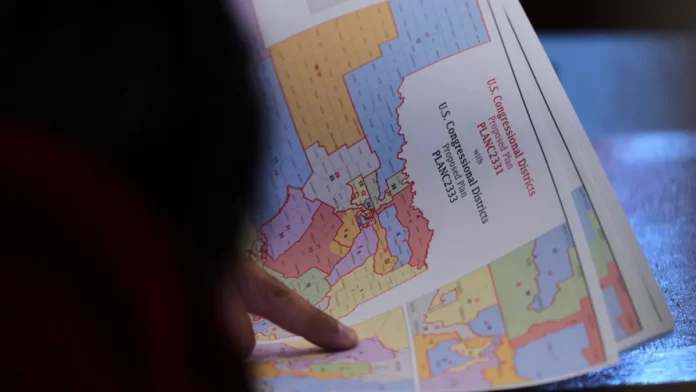A massive redistricting battle is now gripping American politics. This fight centers on Texas and California. These are the two most populous U.S. states. Together, they represent over 70 million Americans. Lawmakers there are engaged in an intense political struggle. Consequently, this clash will impact the balance of power in Washington D.C.
Therefore, the current redistricting battle began in Texas. Republican lawmakers passed a new congressional map. This measure creates five additional seats favoring Republicans. Therefore, Democrats in California quickly responded. They voted to re-draw their own state’s maps. Their goal was to cancel out the move from Texas.
Then, Missouri joined the fight. The governor there ordered a special legislative session. Missouri aims to add another Republican seat. However, this political arms race is spreading rapidly. It is all happening before next year’s critical midterm elections.
So, what exactly is redistricting? The U.S. House has 435 members. Each member represents a specific district. Furthermore, state governments set these district boundaries. Some states use independent commissions. Others let their legislatures draw the lines. This process greatly influences which party wins a seat.
Currently, the House is on a knife’s edge. Therefore, Democrats need to flip only three seats for control. The president’s party often loses midterm elections. Therefore, both sides are fighting fiercely over these maps.
Why is this happening now? Typically, states redistrict only after the census. That happens every ten years. However, President Trump called for action. He urged Republican states to redraw maps now. Therefore, this is an unusual mid-decade move. The aim is to protect Republican control of Congress.
Furthermore, Texas Democrats initially resisted. They even fled the state to block a vote. Eventually, Republicans passed their new maps. Democrats and civil rights groups promise lawsuits. They argue the Texas maps dilute minority voting power.
However, this national redistricting battle involves many other states. For instance, Illinois and New York may launch Democratic countermeasures. Meanwhile, Florida and Ohio are considering GOP-friendly maps. Utah was ordered by a judge to redraw its own maps. A voter-approved rule there bans partisan considerations.
California’s process is more complex. A previous law created a non-partisan commission. Now, lawmakers want voters to decide on new maps. This move could prove controversial. Governor Newsom pledged to “fight fire with fire.”
Ultimately, this fight allows politicians to choose voters. Critics call this practice gerrymandering. The Supreme Court ruled federal judges cannot stop political gerrymandering. This decision gave states more freedom.
Republican-controlled states often have an easier time. They face fewer legal barriers. Democratic states often have rules against partisan maps. This asymmetry is crucial in the current fight.
After all, the outcome will shape Congress for years. Control of the House hinges on these district lines. Investigations and presidential agendas are at stake. Consequently, this redistricting battle is a fundamental struggle for power. Every new seat matters immensely. The national political landscape depends on it.
For more political updates, visit DC Brief.


